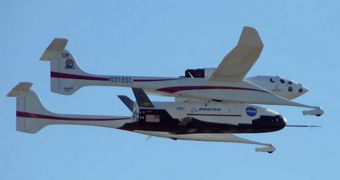The United States Air Force (USAF) may recover its robotic space plane as soon as this weekend, according to an announcement made by officials. The X-37B spacecraft has been circling Earth since April, and it is now scheduled to land in California as soon as Friday, December 3.
This was the maiden voyage for the new spacecraft, which was developed by the Pentagon and the US Defense Advanced Research Projects Agency (DARPA) on Boeing platform originally assigned for development to the American space agency.
Previously, Air Force officials said that the space plane and its classified cargo will return to Earth at the Vandenberg Air Force Base (VAFB) in California. Personnel at the military facility has already started preparing for the landing.
“While the exact landing date and time will depend on technical and weather considerations, it is expected to occur between Friday, December 3, and Monday, December 6,” USAF representatives said in a November 30 announcement.
The spacecraft currently in orbit, called the Orbital Test Vehicle 1 (OTV-1), has been tracked by amateur astronomers ever since it launched, on April 22. They trackers have been keeping an eye on how it changes orbits and altitudes for months.
The X-37B was launched atop an Atlas 5 delivery system from the Cape Canaveral Air Force Station (CCAFS), in Florida. It is a reusable space plane, capable of carrying small cargo in its payload bay.
The actual contents of the bay during the maiden voyage is classified, USAF officials said repeatedly. They only revealed that the current variant of the system can remain airborne for up to 270 days.
After reentering the atmosphere, the space plane will glide similarly to how the shuttle does, and will then touch down at a speed of about 200 miles per hour. All of this is done in auto-pilot mode.
Even if OTV-1 is not on the ground yet, the USAF is already working on completing OTV-2, which is currently scheduled to launch sometime in 2011.
As for the goals these test flights have, analysts believe that they could either be related to testing new satellite-based surveillance technology, or testing out weapons of some kind.
China and Russia have become uneasy when the US-launched the robotic plane. These two nations rightfully fear that nuclear weapons could be deployed to orbit.
Laura Grego also says that the platform itself – which was developed by Boeing Phantom Works – cannot be used to deploy military personnel to operations theaters, or to carry missiles and bombs.
She is a physicist and space security expert with the Union of Concerned Scientists (UCS) Washington, Space reports.

 14 DAY TRIAL //
14 DAY TRIAL //